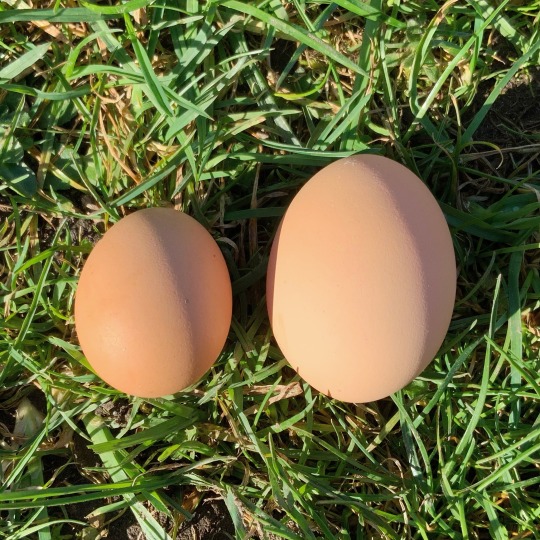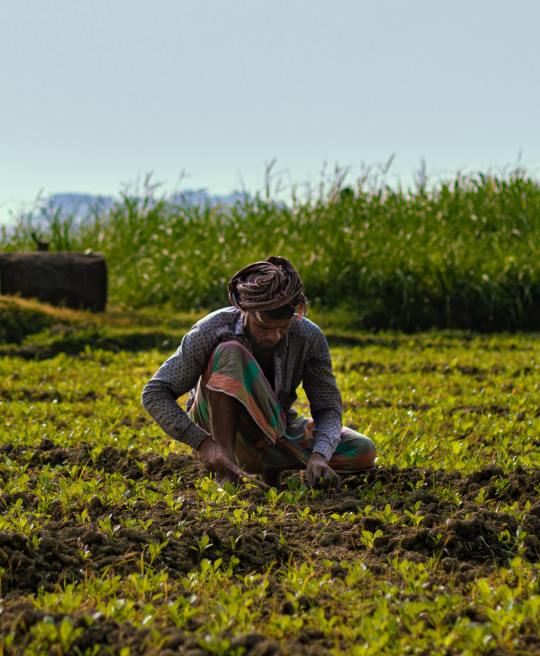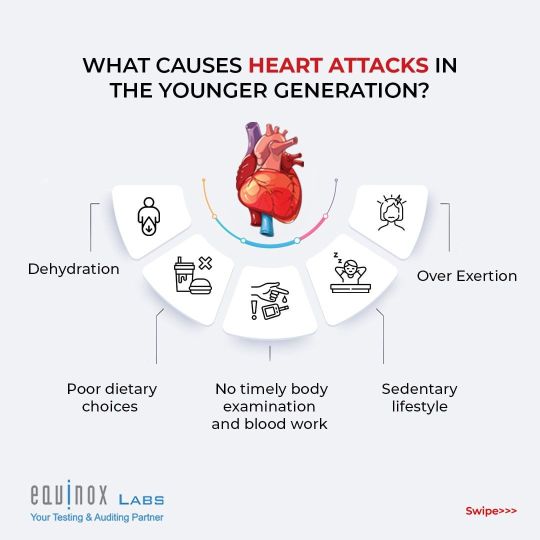#foodsecurity
Text
AN OPEN LETTER to THE U.S. CONGRESS
Support the Food Date Labeling Act (H.R. 3159 and S. 1484)
730 so far! Help us get to 1,000 signers!
Food waste is a huge problem in our country, so I am writing to ask that you support the Food Date Labeling Act (H.R. 3159 and S. 1484).
This bill would clear up confusion about “best-used-by” and other labels by establishing requirements for quality and discard dates in food packaging. Currently, there is no federal regulation for date labels. This means that consumers, confused by different types of labels, end up discarding edible food.
Food waste results in households wasting money and exacerbates climate change. Food waste is responsible for about 6% of total US GHG emissions. The nonprofit ReFED found that reducing food waste could generate $73 billion in financial benefit, recover the equivalent of 4 billion meals for food insecure individuals, save 4 trillion gallons of water, and avoid 75 million tons of greenhouse gas emissions annually in the US.
Thank you for your support of legislation that would enable consumers to save money while mitigating climate change.
▶ Created on April 5 by Jess Craven · 729 signers in the past 7 days
📱 Text SIGN PCYWXY to 50409
🤯 Liked it? Text FOLLOW JESSCRAVEN101 to 50409
#JESSCRAVEN101#PCYWXY#resistbot#green living#food waste#foodwaste#congress#support#foodlabeling#climatechange#legislation#datelabels#activate your activism#federalregulation#open letter#environment#sustainability#reducewaste#consumerprotection#bill#supportlegislation#greenhousegas#foodsecurity#savefood#wastemanagement#GHGemissions#foodpackaging#bestusedby#discarddates#consumerawareness
7 notes
·
View notes
Photo

Jackfruit is most definitely the king of fruits. So abundant and so versatile! #growninhaiti #jackfruit #harvest #community #sharingiscaring #foodsecurity #abundance #regenerativefoodsystems #haiti #ayiti #reforestation #foodforest #agroforestry #organic #nogmos #nopesticides #noherbicides https://www.instagram.com/p/ClHDpteOplF/?igshid=NGJjMDIxMWI=
#growninhaiti#jackfruit#harvest#community#sharingiscaring#foodsecurity#abundance#regenerativefoodsystems#haiti#ayiti#reforestation#foodforest#agroforestry#organic#nogmos#nopesticides#noherbicides
138 notes
·
View notes
Text

So excited ... our new hens have started to lay. Their eggs may be a wee bit smaller at the moment, but we're so grateful for every single one.
It's a good day and I have the biggest smile on my face.
Thank you girls … 🐓🥚🍳🥰
#scotland#lifestyle#outdoors#adventure#family#homesteading#countrylife#countryliving#countrygirl#scottish#homesteader#chickens#hens#eggs#goodfood#healthyfood#freshfood#foodsecurity#kitchen#garden#gardener#gardening#springtime#happiness#grateful#simplelife#simple things#rurallife#rural#life
6 notes
·
View notes
Text










All Food Testing Services in Kolkata, West Bengal
Description:- All food testing services in and around Kolkata. NABL accredited and well equipped lab for food microbial testing, nutritional labeling and shelf life testing.
#EquinoxLabs#CommitmentToSafety#BIScertification#FoodManufacturing#Fssaiupdates#Fssailicense#FoodHandlers#FoodSafety#SafeFood#FoodTesting#worldfoodsafety#foodindustry#foodsecurity#foodquality#fssairegistration#horeca#foodbusinesses#Food testing labs in Kolkata#Food testing in Kolkata#Food quality testing in Kolkata#Food Auditing labs in Kolkata#NABL accredited labs in Kolkata#Nutritional labeling in Kolkata#Food nutrition testing in Kolkata#Shelf life analysis in Kolkata#Shelf life testing labs in Kolkata#Food testing Service in Kolkata#FSSAI approved labs in Kolkata#Food testing laboratories in Kolkata#food testing laboratory in Kolkata
2 notes
·
View notes
Text

Unveiling the Plight: The Negative Impact of Seed Theft on Indigenous Communities
The theft of seeds from indigenous communities has far-reaching consequences, posing a grave threat to their cultural identity, food security, and sustainable practices. In this exploration, we shed light on the alarming repercussions of seed theft, underscoring the urgent need to address this issue. From the loss of traditional crops to the disruption of ecosystems and the erosion of indigenous rights, the impacts are both profound and multifaceted. Together, we must stand against seed theft and advocate for the preservation and empowerment of indigenous communities.
Effects of Seed Theft on Indigenous Communities:
Loss of Cultural Heritage: Seed theft undermines indigenous communities' ability to preserve their cultural practices and pass down traditional knowledge.
Threat to Food Security: The theft of indigenous seeds disrupts local food systems, reducing access to nutritious and culturally significant crops.
Erosion of Biodiversity: Seed theft contributes to the loss of diverse plant varieties, weakening ecosystems and diminishing resilience in the face of environmental challenges.
Disruption of Livelihoods: Indigenous farmers face economic hardships as their seed sovereignty is compromised, affecting their self-sustainability and economic independence.
Violation of Indigenous Rights: Seed theft infringes upon the rights of indigenous communities to control and protect their traditional seeds, exacerbating historical injustices.
Together, let us raise awareness about the negative impact of seed theft on indigenous communities and work towards promoting justice, preservation, and empowerment.
#SeedTheft#IndigenousRights#CulturalHeritage#FoodSecurity#BiodiversityLoss#SustainableFarming#EnvironmentalJustice#IndigenousEmpowerment#TraditionalKnowledge#PreservingHeritage
4 notes
·
View notes
Text
5 Easy & Cheap Meal Ideas from the Garden
5 Easy & Cheap Meal Ideas from the Garden
Growing your own vegetables means you get to try a variety of ways of enjoying those fresh ingredients. We often forget that vegetables can be the star of the show, well not after you try these easy and cheap meal ideas that you can make fresh right from the garden.
Are you interested in growing and preserving food to have better food security at Home? Check out this article ‘Food security at…

View On WordPress
#cheap and easy meals#easy recipes#food#foodsecurity#homesteading#meal ideas#recipes#recipes from the garden#vegetable recipes#vegetables
7 notes
·
View notes
Text
https://lnkd.in/eP7s6ZZb https://lnkd.in/eRNmpWNP
i) Explain how and why the Muskrat Falls lower Churchill industrial project, Labrador, NL, Canada is a valid, reliable example of unrealistic hydro 'megadam', methane-generating, methyl-mercury, neurotoxic poison-producing, corrupting, colonial, constitutionally corrosive construction.
ii) An unrealistic project that exists within shameful British Crown, Canadian, NL Provincial and Federal ‘legal’ mismanagement tradition.
iii) A contradictory unethical, immoral, constitutionally corrosive, criminal jurisdiction.
iv) A capitalist, corporate, fossil fuel unsustainable development.
v) Enforced by corrupt criminal justice systems, immoral failed leadership UK CA: a root cause of our planet's cost of living climate crisis.
vi) Rapid disinvestment and no new investment is imperative.
vii) Why not protect our sacred waters by draining, mitigating such unconscionable Muskrat Falls megadam reservoirs without delay and revoke similar unsafe hydro megadam operating licences worldwide to prevent further ecological, ecocidal and climatic suicide?
viii) No such new fossil fuel, megadam methane developments should be licensed - assisting Mother Earth stay within 2 degrees Centigrade average global warming by rapidly cutting, rapidly accelerating, atmospheric greenhouse gas emissions as soon as possible. #AI #OpenSource #ChatGPT #Perplexity Llewelyn Pritchard MA 17 July 2023
#BusinessCorruption#CostOfLivingClimateCrisis#Canada#Capitalism#ClimateGenocide#ColonialLaw#ConsultationIsNotConsent#CorruptColonialCrownCorporations#CulturalGenocide#CulturalHeritage#DirtyHydroPower#EcologicalDestruction#EcologicalFramework#Energy#FailedLeadership#FederalGovernment#Food#FoodContamination#FoodSecurity#FreePriorInformedConsent#Government#GrandRiverLabrador#Health#HydroElectricDevelopment#HydroElectricPower#HEP#ImmoralLeadership#IndependentResearch#Industry#Innu
2 notes
·
View notes
Link
Explore the challenges of food security and planetary health with Geohoney. Discover solutions to navigate these pressing threats together. Join us now!
2 notes
·
View notes
Text

Greenyard Fresh, a major producer of frozen vegetables, has faced a number of food safety issues in recent years. In 2016, a Listeria outbreak linked to their frozen vegetables occurred in several countries, including the United States, Canada, and the United Kingdom, resulting in 9 deaths and 33 illnesses in the US alone.
In 2018, Greenyard Fresh faced legal action in the UK after a salmonella outbreak was linked to one of its products, affecting over 50 people in the UK. The company was found to have failed to implement adequate food safety measures and was fined £9 million, one of the largest fines ever imposed in the UK for a food safety violation.
Greenyard Fresh was also fined €31.6 million by the European Commission in 2019 for participating in a cartel that fixed prices, allocated customers, and shared markets for the supply of frozen and canned vegetables, mushrooms, and fruits.
In addition, a Listeria outbreak occurred in the Netherlands, Belgium, and Germany in 2018 and 2019, affecting over 40 people and claiming 9 lives, which was traced back to frozen vegetables produced by Greenyard Fresh.
The Dutch authorities found that Greenyard Fresh had violated food safety regulations and imposed a fine of £1 million on the company in 2020. Despite these food safety issues, major retailers such as Tesco, Sainsbury's, Asda, Morrisons, Aldi, and Lidl continue to accept supplies from Greenyard Fresh.
#foodsafety#food#foodindustry#foodie#foodscience#foodtech#foodprocessing#health#foodhygiene#foodquality#safety#foodsecurity#safefood#agriculture#healthyfood#foodblogger#foodporn#foodstagram#healthy#instagood
2 notes
·
View notes
Photo

East African Kanga Cloth with Swahili Proverb: “ God will answer my Prayers”, 44” x 58”, 20 Rd. to Great Neck, WT @aacdpafrica #aacdpafrica #childrenwithdisabilities #zambia #womensempowerment #foodsecurity #kangacloth #africanfabrics #aacdp #marshawinsryg (at West Tisbury, Massachusetts) https://www.instagram.com/p/ClZ2o_JuC81/?igshid=NGJjMDIxMWI=
#aacdpafrica#childrenwithdisabilities#zambia#womensempowerment#foodsecurity#kangacloth#africanfabrics#aacdp#marshawinsryg
4 notes
·
View notes
Photo

Before and after and planted! Welcome to my first ever community garden plot 😁 I got real deep in there to get the quack grass roots but I’m sure I’ll be battling all summer with those buggers. Otherwise my herbs, tomato and strawberries are planted! Probably the earliest I’ve planted my garden ever… not bad for the subarctic!! #garden #gardening #dawsoncity #yukon #subarctic #subarcticgardening #agrarian #farmher #homesteadlife #greenthumb #herbgarden #veggiepatch #growyourown #growyourfood #foodsecurity #hashtagwhore #communitygarden #horticulture (at Dawson, Yukon Territory) https://www.instagram.com/p/CebgDaZF7hV/?igshid=NGJjMDIxMWI=
#garden#gardening#dawsoncity#yukon#subarctic#subarcticgardening#agrarian#farmher#homesteadlife#greenthumb#herbgarden#veggiepatch#growyourown#growyourfood#foodsecurity#hashtagwhore#communitygarden#horticulture
2 notes
·
View notes
Text
An open letter to the U.S. Congress
Upgrade the security of electronic benefit cards and protect families in need!
118 so far! Help us get to 250 signers!
I understand that a bipartisan and bicameral group of lawmakers have introduced the Enhanced Cybersecurity for SNAP Act to upgrade the security of electronic benefit cards and protect families in need. I support this bill! To date, tens of millions of dollars in Supplemental Nutrition Assistance Program (SNAP) benefits have been stolen by criminals exploiting lax security of SNAP electronic benefit cards. Congress has spent years pressing the U.S. Department of Agriculture to require states to issue cards with secure chips rather than magnetic strips that can be easily cloned by criminals. Despite those requests, USDA has failed to update security regulations for benefit cards. This bill would remedy that. The Enhanced Cybersecurity for SNAP Act addresses fraud by directing the U.S. Department of Agriculture (USDA) to update its cybersecurity regulations to ensure SNAP benefits cannot be easily stolen by criminals. It’s a no-brainer—Congress must pass this legislation. Millions of Americans use SNAP to support themselves and their families. With outdated card technology, we are leaving their benefits vulnerable to cybersecurity theft and leaving families at risk of being unable to put food on the table every day. This must change. Thanks.
▶ Created on March 13 by Jess Craven
📱 Text SIGN PPLPMA to 50409
🤯 Liked it? Text FOLLOW JESSCRAVEN101 to 50409
#JESSCRAVEN101#PPLPMA#resistbot#open letter#petition#USCongress#SNAP#Cybersecurity#BenefitCards#FoodSecurity#Legislation#GovernmentAction#PolicyChange#FamilySupport#ElectronicBenefits#SecurityUpgrade#LegislativeInitiative#BipartisanAction#ProtectingFamilies#USDA#GovernmentOversight#PolicyReform#PublicPolicy#SupportingFamilies#LegislativeEffort#BenefitPrograms#SecurityMeasures#ConsumerProtection#PublicSafety#LegislativeSupport
2 notes
·
View notes
Photo

@essenseofyi just harvested yet another jackfruit! We have 3 trees currently filled with fruit and another 8 in hat are flowering for the first time. Looks like we’ll be having jackfruit all year at this rate. I’m not complaining 🤤 . . @essenseofyi sot rekòlte yon lòt djaka! Nou gen 3 pye kounye a plen ak fwi ak yon lòt 8 ki gen flè pou premye fwa. Sanble nou pral gen rekòlt djaka tout ane a nan ritm sa a. Mwen pa nan plenyen 🤤 . . #growninhaiti #jackfruit #djaka #haiti #ayiti #fruit #foodsecurity #harvest #foodforest #regenerativefoodsystems #abundance #growth #community https://www.instagram.com/p/CoLYOT_O19F/?igshid=NGJjMDIxMWI=
#growninhaiti#jackfruit#djaka#haiti#ayiti#fruit#foodsecurity#harvest#foodforest#regenerativefoodsystems#abundance#growth#community
31 notes
·
View notes
Text
Lupine Publishers | Association of Sedentary Behavior with Obesity and Comorbities In Omani Women (Age 30-49 Years): A Cross- Sectional Study

Abstract
The alarming rise and increasing prevalence of abdominal obesity in developed as well as developing nations has made abdominal obesity as a major health concern globally. Abdominal obesity not only predisposes to life threatening conditions like hypertension, cardiovascular diseases, diabetes mellitus, and cancer but also leads to premature mortality. Physical inactivity is a matter of grave concern globally as the whole world has switched from a demanding physically active life to a sedentary lifestyle exposing the populations to a myriad of healthcomplications.
Objective: The main purpose of this research was to study the association between sedentary lifestyle with obesity and comorbidities in Omani women.
Method: The study was carried out during Aug 2019 to Jan 2020 and included a sample of total 398 obese Omani women aged 30-49 years from Muscat and Batina Governorates in Oman. Assessment of sedentary behavior and abdominal obesity associated comorbidities was performed using an IPAQ questionnaire allowing self-evaluation of diverse activities and self-report for the presence of hypercholesterolemia, hypertension, or diabetes mellitus.
Result: The current data indicates that 47% of the women had grade 1 obesity, 32% had grade 11 obesity and 21 % of the women suffered from morbid abdominal obesity which is alarming. Further, 25% of the subjects suffered from hypertension and were on medication, 18% suffered from hypercholesterolemia, 23% suffered from diabetes and 16 % reported to have suffered from gestational diabetes.
Conclusion: Sedentary lifestyles were common among the adult Omani women in the study sample. Lack of any kind of physical activity and sedentary behavior are commonly associated with high BMI, high WHR (abdominal obesity)and the associated diseases like high cholesterol, hypertension, and type 2diabetes.
Keywords: lifestyle; Physical Activity; Obesity; BMI; WHR; Women; Oman
Introduction
Sedentary behavior can be defined as actions which have low energy expenditure typically between 1-1.5 metabolic equivalent of task ( MEs), such as sitting [1]. The rapidly increasing trends in overweight and obese individuals globally and obesity becoming the number one health concern in developed as well as developing nations is alarming [2]. Being obese not only predisposes an individual to chronic life threatening diseases i.e. cardiovascular diseases, dyslipidemia, hypertension, type 2 diabetes and cancer but also causes premature mortality [2,3]. Genetic and environment factors (physical activity, sedentary lifestyle, nutritional and socioeconomic status) have been found to be significant contributory in obesity development [4]. It is now well understood that physical inactivity and sedentary lifestyle pose a notable threat to the body and regular physical exercise of any kind improves physical and mental health [5]. Urbanization and subsequent automatization of daily routine activities have reduced manual labor resulting in lower energy expenditures giving birth to lazier and physically inactive people worldwide [6]. TV viewing was closely linked to obesity not only because of decreased energy expenditure but also due to increased energy intake caused during this inactivity by fat and sugar laden food consumption[7].During the period of last forty years, most of the Gulf countries including Oman have undergone a remarkable change in the socioeconomic status and several studies reveal significant increase in adopting inactive lifestyle in the Gulf region. This shift from a physically demanding life to a sedentary lifestyle have exposed people to high risk of diseases like obesity, hypertension, heart diseases, diabetes, cancer to name a few. Cultural differences and restrictions in lifestyle choices available to females in Arabic countries are the main reasons for increased rates of obesity: Females have restricted access to sporting/communal physical activities [8]. In Oman women may be at a greater risk of developing obesity and the associated morbidities due to their decreased physical activity and sedentary lifestyle. According to a study done in 2000 on Omani adults, approximately 17% of adult male and 24% of adult females were observed to have higher body weight [9]. It was also revealed in a research by the Health Ministry in Oman during 2011 that approximately 52% of 5,000 newly diagnosed cases of T2 diabetics, were female [10]. It was clearly postulated in a newly done study in Oman that metabolic syndrome related to the lifestyle and eating habits increases with the existence of causative risk factors like diabetes, cardio vascular disease and presence of extra fat in the body [11]. A very strong correlation between less physical activity, maximum hours spent sedentarily or sitting every day and increased prevalence of associated complications indicating an inverse relation between reduced activity and risk of getting more diseases [12]. Despite this, the studies indicating the sedentary lifestyle of Omani women are rare therefore the aim of the present study was to examine the association between sedentary behavior and obesity as well as the associated co morbidities.
Materials and Methods
The present cross-sectional study included obese women (aged 30-49 years) visiting Al Raffah Hospital. The subjects were enrolled between August 2019 and January 2020. The study was conducted after explaining the purpose of the study and obtaining informed consent from each participant.Pregnant women and those with any eating disorder were not included in the study. A total of 398 subjects with BMI above 30 aged 30-49 years were included. All the subjects were asked to complete a self-reported questionnaire (IPAQ) to assess physical activity and health status. Subjects were asked questions in order to assess physical activity/ exercise and sedentary lifestyle levels on a weekly basis. BMI (Body Mass Index)=Weight (kg)/height (m^2)was used as an indicator of obesity. The weight was measured using commercial scale” Seca, Germany” with an accuracy of +_ 100 gm. Standing height of the participant was measured using a standardized measuring scale The participant was asked to stand on the horizontal platform without shoes, hold the arms loosely at the sides with the palms facing the thighs. The horizontal bar was lowered until it touched the crown of the participant’s head. The height was recorded to the nearest centimeters and if the reading fell between two values, the lower reading was always recorded. BMI was calculated and the cutoffs provided by the World Health Organization for defining obese (BMI above 30), obesity Grade 1 (30-34.99), obesity Grade II (35-39.99), obesity Grade III (more than 40) were adopted [13]. Waist and hip circumference were measured using a flexible and inelastic tape measure and noted in cm. This ratio is calculated by dividing the waist circumference (cm) by the hip circumference (cm). The WHR above 0.85 in women is considered to be obese and risk of diseases rises steeply when the WHR rises above 0.8.
Statistical analysis was done by the use of the program SPSS version 16 by analyzing variables to see relationships and percentage. Data were analyzed and presented as mean+_ standard deviation and frequency tables. Data is expressed as mean +_ SD (standard deviation) and was analyzed using Graph pad Prism version 5. Chi square test was used for comparing the categorical variables. One-way analysis of variance (ANNOVA) followed by Turkey’s test. Student’s unpaired t-test and the stepwise logistic regression analysis were used for comparing the continuous variables. Probability value of < 0.05 was considered statistically significant.
Ethical Considerations
Permission was obtained from the Ethical Review Board of Al Raffah Hospital, Muscat before commencing the interviewing and measurements and the subjects were given a brief orientation.
Results
The study included 398 obese women (BMI> 30), with age ranging from 30-49 years with 38% (n=153) in age group 30-34 years, 22% (n=89) in age group 35-39 years, 16% (n=63) were between 40-44 years and 23% (n=93) in the age bracket of 45- 49 years. Out of 398 obese women 47% were found to be grade I obese (n=187), 32 % (n=126) were grade II obese and 21 %(n=85) were morbidly obese with grade III obesity. The WHR calculations revealed that 69 % (n= 276) of the women with WHR above 0.85 are suffering from abdominal obesity and are at high risk of comorbidities, 29 % (n=114) were at moderate risk of diseases while only 2 % (n=8) had low risk of morbidities. 25% (n=99) of the subjects self-reported to suffer from hypertension and were on medication. Hypercholesterolemia was found in 18 % (n=70) of the study population and 23% (n=91) was suffering from diabetes and were regularly taking medication.16 % (n=63) of the women reported to have suffered from gestational diabetes, when asked about their past history of any diseases (Table 1 & 2).
Regarding physical activity parameters, only 9 % (n=35) study participants reported that they indulged in vigorous activity (i.e. heavy lifting, swimming, running, bicycling, tennis etc.). 6 % (n=25) did some kind of vigorous activity 2-3 times a week while 2% (n=10) subjects were regularly doing a vigorous activity around 4 to 7 times a week. Out of those who were involved. Out of thosewho were involved in vigorous activity 29% (n=10) were doing for 15 to 30 minutes, 37% (n=13) were doing between 31 to 59 minutes and 34% (n=12) were doing for 1 hour ormore. Further, only 6% (n=23) of the women were involved in any kind of moderate physical activity (i.e. dancing, carrying light loads, house cleaning etc.). 5% (n=18) of the subjects were doing moderate physical activity 2-3 times a week while only 1% (n=5) of the subjects were regularly doing moderate physical activity 4-7 times a week. Out of those who were involved in moderate physical activity 22% (n=5) spent 15 to 30 minutes and 78% (n=18) spent 1 hour and more.
65 % (n=260) of the subjects reported that they never indulged in walking, 23 % (n=93) of the women had a walking routine for 1-3 days/week, 11 % (n=43) of the participants regularly indulged in walking for 4-7 days/week. Of those who regularly indulged in walking 35% (n=47) walked about 15 minutes per day and 65% (n=89) walked between 16 to 30 minutes per day.When asked about the total time spent on sitting (at work/home/while doing course work/leisure time) 44% (n=176) of the women reported to spend 10-12 hours sitting/day, 26% (n=103) of the subjects were sitting for 7-9 hours/day, 20% (n=79) of the women spent more than 12 hours on sitting per day and 10% (n=39) of the women spent only 4-6 hours on sitting .
Discussion
The increasing burden of diseases globally is a major health concern. As per the WHO, the obesity related morbidities account for approximately 61% of the deaths and 49% of the disease burden across the world and if this alarming trend continues, roughly 70% of total global deaths and 56% of the disease burden worldwide will be attributable to these diseases by 2030 [14]. Like many Gulf countries, Oman is also facing new health challenges due to increasing trends in lifestyle related diseases thus increasing the incidence of the disease in the country. Women may be more prone to adopting sedentary lifestyle; thus becoming obese and at higher risk of developing associated health disorders due to lack of physical activity. The current data indicates that 47% of the women had grade 1 obesity, 32% had grade 11 obesity and 21 % of the women suffered from morbid obesity which is alarming. The WHR calculations indicated that majority of the subjects i.e. 70% had abdominal obesity and were at a very high risk of developing co morbidities, 28% of the subjects were at moderate risk while only 2% of the women had low risk of developing obesity associated diseases. Though BMI has been consistently linked with an increased risk of cardiovascular diseases and type 2 diabetes [15], abdominal obesity assessed through WHR is associated with higher risk for obesity related morbidities and mortalities than overall adiposity [16,17] .25% of the women were having high blood pressure and were regularly taking medication and these findings are in agreement with several other studies where age, obesity, and sedentary lifestyle were significant factors for hypertension [18- 21]. 23% of the participants reported to have type 2 diabetes and were on medications. Studies indicate that sedentary lifestyle like spending long hours on screen, TV, reading (encourages overeating), driving etc. are strongly linked to excessive weight gain further leading to type2 diabetes [22]. According to a survey conducted by International journal of behavioral nutrition and physical activity in 2013, 90% of type 2 diabetes in women can be strongly linked to obesity, unhealthy eating habits and physical inactivity i.e. sedentary behaviors [23,24]. 18% of the subjects had high cholesterol levels. A positive correlation has been found between sedentary lifestyle and higher chances of developing heart diseases through raised blood triglycerides and reduced HDL cholesterol, as indicated by a recent meta-analysis [25,26]. The ATTICA study showed that physically active women had significantly lower levels of total cholesterol, LDL-cholesterol, triglycerides, and higher levels of HDL- cholesterol, compared to sedentary women [27]. 16--- % of the women reported that they had gestational diabetes and were on medication throughout the pregnancy. A myriad of studies done globally suggest that GDM is prevalent in almost 17.8% of the pregnancies [28]. which is strongly associated with a greater risk of complications and developing type 2 diabetes later in life both for mother and baby [29]. Reports indicate an inverse correlation between GDM and regular exercise during pregnancy as well as the BMI at the time of conception [30,31].
Regular physical exercise of any kind plays a crucial role not only in preventing obesity but also by reducing the risk of developing metabolic syndrome i.e. type 2 diabetes, hypertension and dyslipidemia. The physical activity parameters were assessed through IPAQ by interviewmethod and 91% of the women reported that they never indulged in any vigorous physical activity in the last seven days, 6% of the subjects indulged in vigorous physical activity 1-3 times a week while only 2% of the women were doing vigorous exercise for almost 5-6 times a week. Intense physical activity has been associated with the prevention of heart diseases in middle aged adults [32].Those who were involved in regular vigorous activity i.e. 29% were doing for 15 to 30 minutes, 37% were doing between 31 to 59 minutes and 34% were doing for 1 hour ormore. Furthermore, 94% of the women were not involved in any kind of moderate physical activity (i.e. dancing, carrying light loads, house cleaning etc.), only 4.5%of the subjects were doing moderate physical activity 1-3 times a week while only 1.3% of the subjects were regularly doingmoderate physical activity 4-5 times a week. Out of those who were involved in moderate physicalactivityi.e. 22% spent 15 to 30 minutes, 22% spent 31 to 59 minutes and 56% spent 1 hour and more. Further, 65% of the subjects reported that they never indulged in walking, 23% of the women had a walking routine for 1-3 days/week, 11% of the participants regularly indulged in walking for 4- 5 days/week. Those who regularly indulged in walking i.e.33% walked about 15 minutes per day and 65% walked between 16 to 30 minutes per day. Regular brisk walk may reduce the risk of obesity as well as its associated co morbidities [33]. When asked about the total time spent on sitting (at work/home/leisure time i.e. TV watching) 44% of the women reported to spend 10-12 hours sitting/day, 26% of the subjects were sitting for 7-9 hours/day, 18% of the women spent more than 12 hours on sitting per day and 10% of the women spent only 4-6 hours on sitting. Sitting time (car/ chair /TV/screen/working hours) involves minimal movement with low energy expenditures. Prolonged Sitting time is a serious health concern due to the deleterious effects caused by the sedentary lifestyle if a subsequent rise in physical activity does not balance it out [34]. A recent study revealed that long hours of continuous sitting (sedentary time) is independently associated with obesity and its associated diseases like type 2 diabetes [35]. Normal weight women need at least 1 hour of moderate-to-vigorous physical activity for maintaining a steady weight as reported by The Women’s Health Study done on 34,000 middle aged women [36].The results of another study indicate that any kind of vigorous activity is more effective than slow walking for weight loss and it was reported that those women who increased their physical activity by 30 minutes/day gained less weight than those with steady activity levels [37-39]. Furthermore , recent research done on a control group of obese middle-aged women suggested that 45minutes of moderate-to-vigorousaer obicactivity, 4-5days/week significantly reduced the body weight and the abdominal fat as compared to those who did not exercise [40].
Conclusion
Such changes are essential to make physical activity an integral and natural part of people’s everyday lives-and ultimately, to turn around the obesity epidemic. Our data calls for attention to the need for implementation of effective interventions focusing on restricting sedentary behaviors and encouraging a physically active lifestyle especially in high risk Omani women. The public health programs should take into consideration these factors while planning for obesity prevention. Public awareness of the health concerns associated with sedentary lifestyle is urgently needed along with public health interventions aimed atchanging lifestyle behaviors among Omani women.
for more information about Scholarly Journal of Food and Nutrition archive page click on below link
https://lupinepublishers.com/food-and-nutri-journal/archive.php
for more information about lupine publishers page click on below link
https://lupinepublishers.com/index.php
2 notes
·
View notes
Photo

PLANTING! Planting…. 🪴🌿🌱 PLANTING!! Back in Mid March…. We began with our seedlings! 🌱🌿🪴🌾🌿🌱 NOW IN APRIL! BOOM!! 🌿🌿🌿🌿🌿🌿🌿 (After Spring Rain💦💦) LOOK AT THE GROWTH! ❤️🌿💦🌿❤️ WE LOVE IT ALL! Being outside! Working in the dirt! Loving Learning! Using Team Work! Growing Together!! Families GARDENING!! We love it all! Alamo RCD Growing Rural Garden Program!! ... #waterlandyou ❤️ 🌱 🌿 🔸Go to www.alamorcd.org for more info on our program! Donations are always appreciated!! 🌿 🌱 ❤️ ❤️🌿🌿🌱❤️❤️🌿🌿🌱❤️ #agriculture #kidsarethefuture #youthpower #gardens #families #gardeningisfun #healthy #healthyeating #foodsecurity #foods #kidsatheart #together #waterlandyou #ARCDfamilies #gardeningwithkids #ARCDfarm2fork #stophungernow #stophunger #food4kids #gardenfever #garden #groworganic #growing #growyourown #urbanfarm #backyardgarden #lovegardening #farm #farming #ranch https://www.instagram.com/p/Cc9Ko2Oskss/?igshid=NGJjMDIxMWI=
#waterlandyou#agriculture#kidsarethefuture#youthpower#gardens#families#gardeningisfun#healthy#healthyeating#foodsecurity#foods#kidsatheart#together#arcdfamilies#gardeningwithkids#arcdfarm2fork#stophungernow#stophunger#food4kids#gardenfever#garden#groworganic#growing#growyourown#urbanfarm#backyardgarden#lovegardening#farm#farming#ranch
2 notes
·
View notes
Text
Food Testing in Ahmedabad | Equinox Labs
Get complete food testing services in Ahmedabad to help ensure your food product's nutritional labeling and shelf life. Read more....

#EquinoxLabs#CommitmentToSafety#BIScertification#FoodManufacturing#Fssaiupdates#Fssailicense#FoodHandlers#FoodSafety#SafeFood#FoodTesting#worldfoodsafety#foodindustry#foodsecurity#foodquality#fssairegistration#horeca#foodbusinesses#foodtestinglabsinahmedabad#foodtestinginahmedabad#bestfoodtestinglabinahmedabad#fssaiapprovedlabsinahmedabad#shelflifeanalysisinahmedabad#foodtestinglaboratoryinahmedabad#sensoryevaluationlabinAhmedabad#sensoryevaluationinAhmedabad#nutritionallabelinginahmedabad#Foodnutritiontestinginahmedabad#Foodnutritionlabinahmedabad#foodqualitytestinginahmedabad#foodtestinglaboratoriesinahmedabad
0 notes